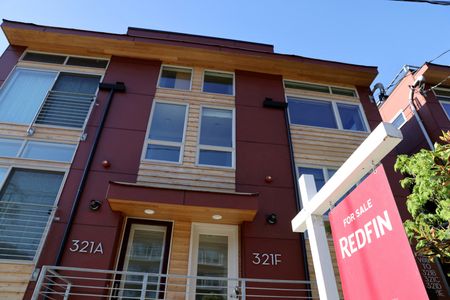(Reuters) – U.S. residential mortgage refinancing activity climbed to a six-month high last week, a trade group said on Wednesday, fueled by a third straight weekly drop in borrowing costs on the heels of a pair of major bank collapses that have clouded the outlook for interest rates.
The Mortgage Bankers Association’s weekly index of overall home loan application volumes climbed 2.9% to notch a fourth week of gains, the longest up-streak in four years. The increase was led by a 4.8% rise in applications to refinance an existing loan, which brought that activity to its highest level since last September and furthered the distance from a two-decade low hit at the end of last year. Applications for loans to purchase a home rose 2%.
The average contract rate for a 30-year, fixed-rate mortgage, the most popular home loan, fell to a six-week low of 6.45%, MBA said.
“While the 30-year fixed rate remained 1.65 percentage points higher than a year ago, homebuyers responded, leading to a fourth straight increase in purchase applications,” MBA Vice President and Deputy Chief Economist Joel Kan said in a statement. “Homeprice growth has slowed markedly in many parts of the country, which has helped to improve buyers’ purchasing power.”
The Federal Reserve’s rapid interest rate increases over the last year – aimed at lowering inflation from the 40-year highs touched last summer – broadsided the housing market, driving mortgage rates to a peak above 7% last fall, driving home sales lower and bringing lending for both new purchases and refinancings to a near standstill.
Data last week showed the worst may have passed for residential real estate, though, with sales of both new and existing homes climbing in February.
Moreover, just how much further the Fed will lift interest rates is uncertain after the failures of Silicon Valley Bank and Signature Bank within days of each other earlier in March prompted emergency measures to shore up the wider banking system. That also led the U.S. central bank to adopt a more cautious policy footing at its latest meeting last week.
Refinance activity hit the lowest level since 2000 in the final week of 2022 and with the latest increase has now rebounded by more than 60%. That said, it remains roughly that same magnitude lower than it was a year ago, and it is unclear how much more upside it has unless rates drop substantially further from here.
“Most homeowners still have rates significantly lower than current levels, leaving only a small pool of borrowers with an incentive to refinance,” Kan said.
(Reporting by Dan Burns; Editing by Leslie Adler)





